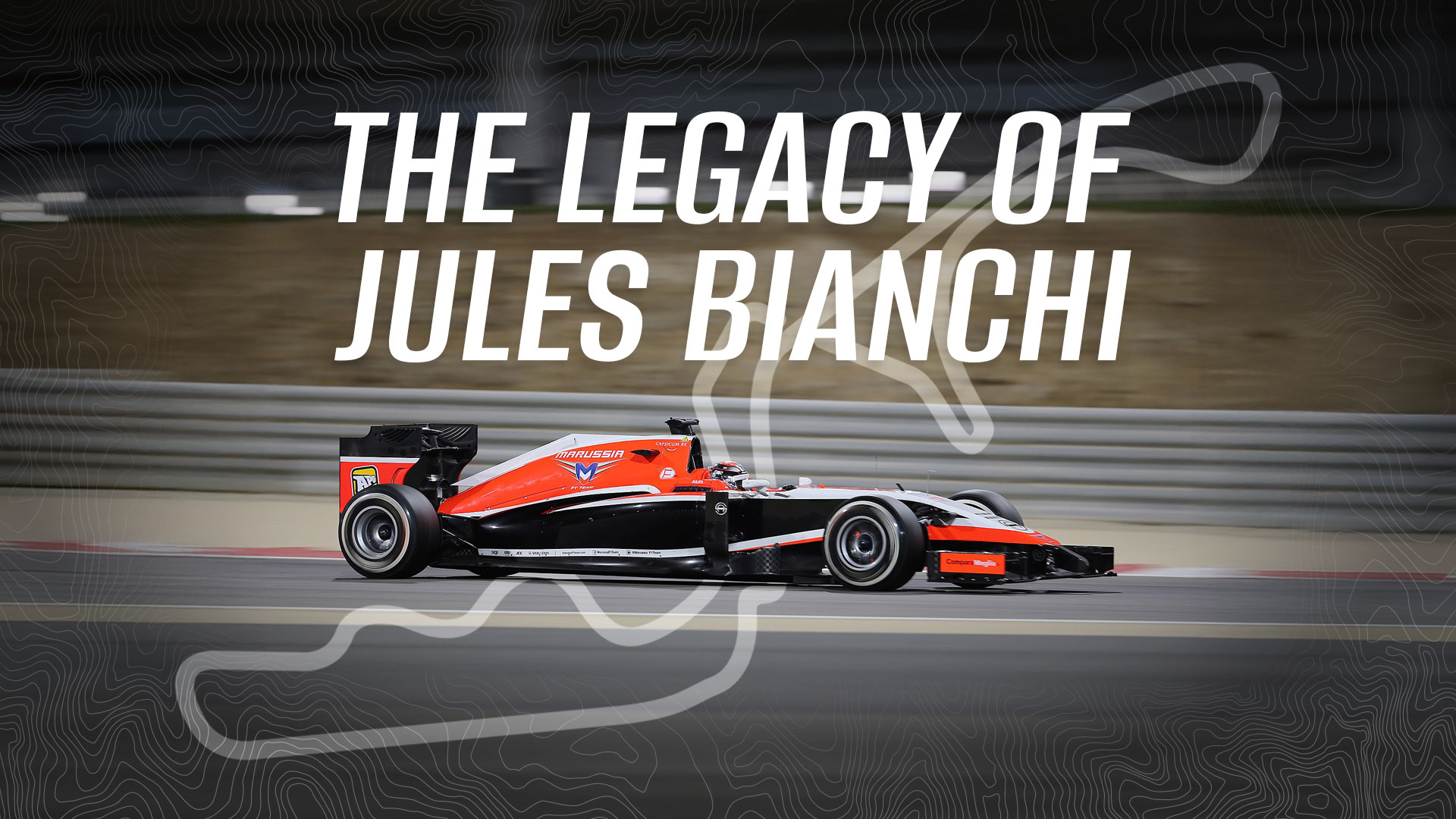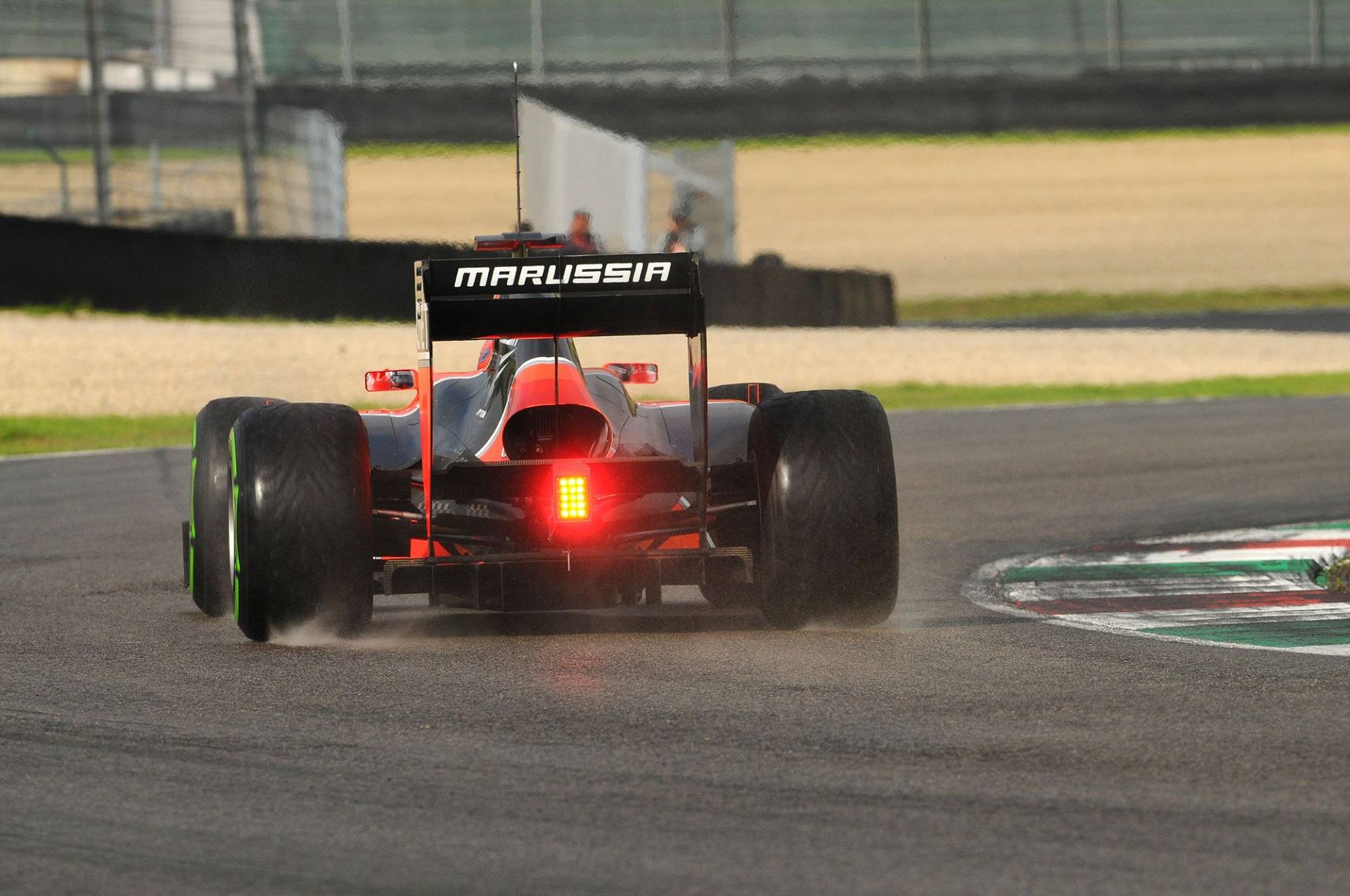

From a kart in Provence to the bright lights of Monaco, Jules Bianchi’s story is one of brilliance, bravery, and a legacy that changed Formula 1.
It began, as so many racing stories do, with noise and smell. The crack of a two-stroke engine on a cool Provençal morning. The bitter scent of petrol mixed with cut grass. A small boy in a helmet too big for him, eyes just visible through the visor, looking at the kart like it was a spaceship. Jules Bianchi was three years old and already certain of what he wanted to be.
His father Philippe ran a little kart track in Brignoles, an hour from Nice, and he treated it like a chapel. The family had history. Grandfather Mauro had raced GTs for Alpine and won three world titles. Great-uncle Lucien had driven for Ferrari and won Le Mans in 1968 before being killed testing a car in Belgium. The Bianchi name carried speed and sorrow in equal measure.
Jules grew up surrounded by it. While other children learned football scores, he learned rev ranges. By nine he was racing karts across France, quiet in the paddock, ruthless on track. His father said you could tell the moment Jules got serious because the chatter stopped and the stare arrived - that long, fixed gaze down the straight before lights out.
He won his first regional title at twelve, another at thirteen, and by fifteen people were whispering his name at circuits he hadn’t even seen yet. He didn’t crash, didn’t shout, didn’t boast. He simply drove with a precision that looked older than he was. A local mechanic once told Philippe, “That boy drives like he’s already seen the corner before he gets there.”
In 2007, barely eighteen, he left home for the French Formula Renault 2.0 Championship. It was the real world - trailers, cold mornings, and sponsors who disappeared faster than lap times. Most rookies spent their first season spinning. Jules didn’t.
His engineer remembered that winter test at Ledenon when the car snapped sideways through the last bend. Anyone else would have backed off. Jules caught it, kept his foot in, and crossed the line faster than the session leader. When they pulled the data, the trace showed not a single correction. Pure instinct.
He won five races that year and the title by a clear margin. When they handed him the trophy, he smiled politely, shook hands, and disappeared to help pack the truck. That was Jules - no swagger, just work.
Next came the Formula 3 Euro Series. The paddock was brutal - names like Hulkenberg, Ricciardo, Bottas. Future F1 men, all hungry. Jules joined ART Grand Prix in 2008 and spent a season learning how little talent alone could guarantee. The following year he came back leaner, sharper, and destroyed the field. Eight wins. Champion.
He was suddenly the French hope. Reporters followed him, manufacturers watched him, and in Maranello the Ferrari Driver Academy was quietly forming a list. They called him that autumn. “Come to Fiorano,” they said. “We’d like to see what you can do.”
It was raining in northern Italy when he arrived. Typical, he thought. He’d grown up under blue skies; now his dream test would take place under a grey one. But when he climbed into the scarlet F60 and pressed the starter, the world shrank to a heartbeat.
The mechanics expected nerves. They got smoothness. His first lap looked like his tenth. His braking points were perfect. When he returned to the pits, Stefano Domenicali leaned over and said, “You are very calm, Jules. Too calm.” Jules just smiled. “I like the car,” he said.
Ferrari signed him to the Driver Academy that day. He was twenty. Luca di Montezemolo told the press, “We have found a driver of the future.”

Formula 1 never rewards patience, but it demands it. For Jules the next few seasons became a lesson in both. Ferrari placed him as a reserve at Force India - a team full of promise, short on certainty.
He spent endless days in the simulator, pounding out laps of circuits he might never drive. The team’s regulars were Paul di Resta and Nico Hülkenberg, both quick, both experienced. Jules waited, watching, learning. At Silverstone tests he’d take the car out after the main drivers had finished, fuel load heavy, tyres worn, yet still find a tenth or two they’d missed.
Force India’s engineers called him “The Shadow”. Quiet, efficient, always there. He learned setups, data analysis, pit wall politics. Sometimes he’d sit in briefings until midnight, head resting on his hand, just listening. “He wanted to know everything,” one engineer said. “He was building a map in his head.”
He came close to a race seat for 2013 but sponsorship deals reshuffled the grid, and the door closed. Ferrari found him another way in - a drive at Marussia, the smallest team on the grid. The car was slow, heavy, underpowered. It didn’t matter. Jules just wanted to race.
The weekend started badly. Electrical gremlins on Thursday, gearbox change on Saturday - meaning a five-place grid penalty that dumped him to twenty-first. His engineer, Andrea Stella, said, “We start from the back, Jules. Let’s enjoy the race”. Jules laughed. “In Monaco, anything can happen”.
And it did.
When the lights went out, he launched like a stone from a sling. Two cars in the first hundred metres. By the tunnel he’d picked off another. The radio crackled: “Nice one, Jules. Keep pushing”.
Lap 25 - safety car. Debris from Perez’s Force India blocked the track. Most of the field pitted. Marussia rolled the dice; Jules stayed out. When the race resumed he was in twelfth, a position so high the timing screens looked wrong. He drove like a man possessed, braking impossibly late into Mirabeau, threading the car through swimming-pool barriers with centimetres to spare.
“Box, box, box”. “Negative”, he replied. “Tyres still good.”
By lap 50 another safety car bunched the field. His tyres were fading, his gearbox coughing on downshifts, but he refused to yield. Kobayashi tried to dive inside at Rascasse; Jules closed the door with millimetres to spare. The commentators barely mentioned him until, somehow, when the chequered flag fell, the red-and-black Marussia crossed in eighth - demoted to ninth by a penalty, but it didn’t matter. Two championship points. The first in Marussia’s history.
He screamed on the radio, a rare burst of emotion. “Yes! Yes! We did it, guys!” In the garage, mechanics wept. Booth hugged every man in sight. “He dragged us into the points by pure will,” one said.
Later that evening, in the paddock bar, rival team bosses raised glasses. Even the Ferrari camp grinned like proud parents. Alonso told reporters, “He did today what all great drivers do - made the impossible look simple.”
That drive changed everything. Ferrari’s plan was clear: a season at Sauber in 2015, then the Scuderia. “He will be in red soon,” whispered one engineer. “It’s only a matter of time.”

Typhoon Phanfone rolled across Japan on race weekend, bringing sheets of rain and wind strong enough to rattle pit-lane hoardings. The drivers walked the circuit in waterproofs, heads down, water streaming off their visors. Jules looked up at the grey sky and smiled. “We will race,” he said.
Sunday afternoon. The grid lined up under heavy clouds, spray rising even before the start lights. Hamilton, Rosberg, Vettel, Alonso - champions at the front. At the back, car 17 waited patiently. When the race began behind the safety car, Jules tucked in, visor cracked open to stop it fogging.
Lap 40. Adrian Sutil lost control at Dunlop Curve and slid into the barriers. Yellow flags waved. A recovery vehicle rolled onto the run-off area to lift the Sauber clear. The rain grew heavier.
Lap 43. Jules came through the same corner, same patch of standing water. The Marussia aquaplaned. Marshals saw the flash of headlights, then impact — sickening, sharp, metallic. The car slid beneath the tractor’s rear, the roll-bar crushed. The engine cut. Silence.
“Car 17 off at Dunlop”, race control announced. No replay. No commentary. Just rain.
Marshals sprinted through mud. Sutil dropped to his knees. The medical car arrived within seconds; they found Jules unconscious, still strapped in. “He’s breathing,” one shouted. They cut away the carbon fibre, lifted him out, and the world held its breath.
He was flown by helicopter to Mie General Hospital, emergency surgery for severe head trauma. Ferrari sent doctors; the paddock went still. “Forza Jules” stickers appeared on every car within days.
For nine months the world waited. Updates came rarely, hope thinner each week. His family moved him to Nice to continue care. Fans sent letters, paintings, prayers.
And then, on 17 July 2015, his parents released a statement: Jules passed away last night. He fought until the very end. He was twenty-five.
Formula 1 stopped. Ferrari lowered its flag. The next race began with drivers standing in a circle around their helmets, heads bowed, engines silent. Sebastian Vettel’s voice broke as he said, “He was one of us. We race for him now.”

Jules Bianchi, born 3 August 1989, died 17 July 2015.
The boy from Brignoles who made the world believe. The man who reminded us why we love this dangerous, beautiful sport. And when the rain fell on Suzuka, he became eternal.
Written by: Paul Pearce
Header Image Credit: Habeed Hameed
This file is licensed under the Creative Commons Attribution-Share Alike 2.0 Generic license. As permitted by this license, the file has been edited by widening the image, adding a graphic of Suzuka circuit, the text "The Legacy of Jules Bianchi", and stylistic graphics and gradients. The original file can be found here.